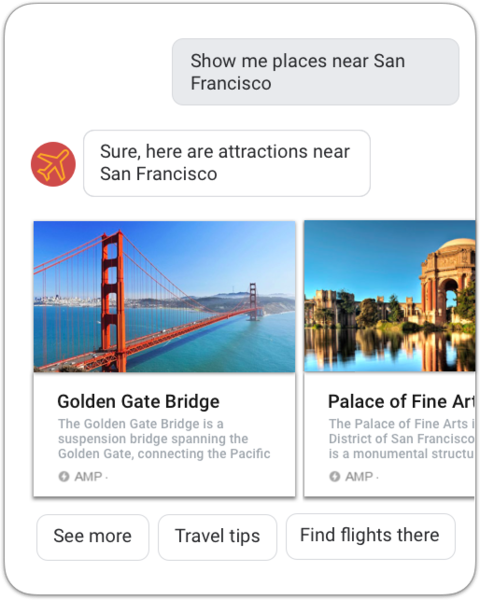Google adds features for Actions, its ecosystem of voice apps similar to Amazon's Alexa skills (GOOGL)

This story was delivered to BI Intelligence Apps and Platforms Briefing subscribers hours before appearing on Business Insider. To be the first to know, please click here.
Google unveiled a slew of new features for its ecosystem of Google Assistant voice apps, called "Actions," the company announced last week.
Google Assistant actions are similar to Amazon Alexa skills.
The new features — Custom Device Actions, push notifications, and support for media playback — could incentivize more developers to create actions for Google Assistantand drive consumer engagement, ultimately making Google Assistant a stronger competitor in the voice assistant landscape. That's because the more voice apps out there, the more useful — and appealing — the voice platform is for consumers.
Here are some of the new features for actions that Google is hoping will win over more voice developers:
Custom Device Actions to enable developers to implement native functionality that’s specific to their devices. Currently, developers are limited to universal commands that Google implemented. But with Custom Device Actions, developers have the flexibility to extend Google Assistant to fully support their devices by adding their own custom actions. For example, a manufacturer of a smart dishwasher could add a command for an action that’s not universal across other dishwashers, like "start a hypercycle."
Daily updates and push notifications to re-engage users. A new push notification API enables apps to send out alerts to users about the latest content available. Google is likely relying on notifications to bolster user retention and engagement, as they have been successful for smartphone apps. For example, push-enabled app users logged 53% more monthly sessions in mobile apps compared with users who hadn't engaged with a push message, according to Localytics.
Support for media playback and improved content carousels. Actions will now support media playback — such as meditation sessions, relaxing sounds, and clips from TV shows — on speakers and Android phones. Additionally, actions that are highly visual-based, such as those on smart speakers with display screens, can include a browse carousel that enables users to visually browse content (see below).
The new features will be key in bolstering user engagement and retention for Google Actions, which are two sore spots for voice app developers. One of the main issues with voice assistants is discoverability of voice apps — only 48% of smart speaker owners have used a third-party voice app, according to Voicebot.ai. And once they find a voice app, there’s only a 6% chance that the user will continue using that voice app within two weeks, according to a September 2017 report from VoiceLabs. The new features could help to reduce the friction associated with voice app discovery and, in turn, drive engagement and retention.
Business Insider Intelligence, Business Insider's premium research service, has written a detailed report on voice apps that explores the two major viable voice app stores. It identifies the three big issues voice apps are facing — discoverability, monetization, and retention — and presents possible short-term solutions ahead of industry-wide fixes.
Here are some of the key takeaways from the report:
The market for smart speakers and voice platforms is expanding rapidly. The installed base of smart speakers and the volume of voice apps that can be accessed on them each saw significant gains in 2017. But the new format and the emerging voice ecosystems that are making their way into smart speaker-equipped homes is so far failing to align with consumer needs.
Voice app development is a virtuous cycle with several broken components. The addressable consumer market is expanding, which is prompting more brands and developers to developer voice apps, but the ability to monetize and iterate those voice apps is limited, which could inhibit voice app growth.
Monetization is only one broken component of the voice app ecosystem. Discoverability and user retention are equally problematic for voice app development.
While the two major voice app ecosystems — Amazon's and Google's — have some Band-Aid solutions and workarounds, their options for improving monetization, discoverability, and retention for voice apps are currently limited.
There are some strategies that developers and brands can employ in the near term ahead of more robust tools and solutions.
In full, the report:
Sizes the current voice app ecosystem.
Outlines the most pressing problems in voice app development and evolution in the space by examining the three most damning shortcoming: monetization, discoverability, and retention.
Discusses the solutions being offered up by today's biggest voice platforms.
Presents workaround solutions and alternative approaches that could catalyze development and evolution ahead of wider industry-wide fixes from the platforms.
See Also:

 Yahoo Finance
Yahoo Finance 
